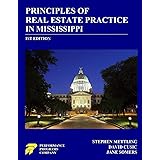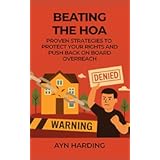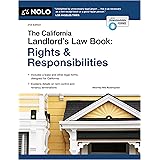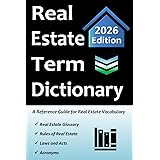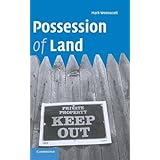Navigating the complex world of real estate investment can feel like charting a course through uncharted waters. Every year, market conditions shift, interest rates fluctuate, and new opportunities emerge, leaving investors to wonder: which strategy will truly deliver in the coming year? Just recently, I found myself reflecting on past investments, much like many seasoned investors do, realizing that what worked a year ago might need a fresh look today. This ongoing evaluation is crucial for staying ahead.
The accompanying video offers an invaluable framework, honed over 17 years of property investment experience, for evaluating the top property investment strategies in 2025. It presents a clear, personalized system for ranking various approaches based on critical factors like Return on Investment (ROI), Speed, Difficulty, Prior Knowledge, Startup Capital, Risk, and Passivity. This isn’t just about identifying the “best” strategy universally, but empowering you to determine which approach aligns most closely with your personal goals and resources for the year ahead.
The speaker meticulously scores each strategy out of ten across these seven crucial criteria, where a ’10’ signifies incredible potential and a ‘5’ is satisfactory. This dynamic evaluation tool, which the speaker suggests revisiting annually due to market changes in interest rates, house prices, yields, and taxes, is an excellent way to refine your focus. Let’s delve deeper into each of these property investment strategies, expanding on the video’s insights and providing additional context for your own strategic planning.
Evaluating Your Property Investment Strategies for 2025
Before diving into specific strategies, understanding the evaluation framework is key. The video’s criteria provide a holistic view beyond just immediate financial returns, encouraging a thoughtful assessment of each opportunity. This comprehensive approach helps mitigate risks and aligns your investments with your broader lifestyle and financial aspirations.
Key Investment Criteria Explained
- Return on Investment (ROI): This measures the profitability of an investment. A high ROI means significant financial gains relative to the initial outlay.
- Speed: How quickly can you initiate the strategy and see initial returns or complete a cycle? This is crucial for investors with time-sensitive goals.
- Difficulty: The inherent complexity of executing the strategy, from paperwork to project management.
- Prior Knowledge: The level of expertise or experience required to successfully implement the strategy.
- Startup Capital: The amount of initial funds needed to begin the investment.
- Risk: The potential for financial loss or other adverse outcomes. Lower scores here indicate higher risk, while higher scores mean lower risk.
- Passivity: How much ongoing time and effort is required after the initial setup. Highly passive strategies require minimal day-to-day management.
By using this lens, you can move beyond simple hype and make data-driven decisions tailored to your unique circumstances in the real estate market.
Top Property Investment Strategies Explored
Let’s break down the strategies discussed in the video, elaborating on their mechanics, challenges, and opportunities, helping you to refine your approach to property investment.
Rent-to-Service Accommodation (Airbnb)
This innovative strategy involves renting a property from a landlord and then subletting it on a short-term basis, typically through platforms like Airbnb. The video highlights its incredible earning potential with a Return on Investment (ROI) score of 10, noting that an initial outlay of £1,000-£3,000 could generate £1,000 profit per month. The speed is also remarkable, earning a Speed score of 9, as properties can often be secured and listed within a week.
However, don’t let the allure of quick returns overshadow the operational demands. The speaker gives it a Difficulty score of 3 (where 10 is easy), emphasizing that it’s “harder than people think.” Success hinges on establishing robust procedures for guest management, cleaning, maintenance, and implementing a reliable online channel manager. While prior real estate knowledge isn’t extensively required (Prior Knowledge score of 5), understanding local regulations, marketing, and customer service is vital. Startup capital is relatively low (Startup Capital score of 8), but the strategy carries a higher inherent risk (Risk score of 3) due to not owning the asset, potential seasonality, and reliance on platform policies. Initial phases are far from passive, earning a Passivity score of 3, as you build and refine your systems.
Buy, Refurbish, Refinance (BRR)
The BRR strategy involves purchasing an undervalued, often dilapidated property, enhancing its value through refurbishment, and then remortgaging it to pull out the initial capital (and sometimes more). This allows investors to recycle their cash and build a substantial portfolio. The speaker rates its Return on Investment (ROI) as an infinite 10, as the goal is to recoup all invested capital, leaving you with an equity-rich asset. This is a powerful mechanism for wealth creation in real estate.
Despite its financial appeal, BRR is a slow and demanding process, receiving a Speed score of 1. The journey from purchase to refinance can easily span a year, involving multiple complex stages. It’s also rated as highly difficult (Difficulty score of 2) and requires significant prior knowledge (Prior Knowledge score of 2), as you’ll be managing builders, surveyors, and navigating planning regulations. Startup capital needs are substantial (Startup Capital score of 2), although leveraging “other people’s money” through joint ventures or bridging loans is an option. While the process itself is active, once refinanced, the property can become a relatively passive income stream (Passivity score of 5), and owning the asset provides a degree of security against market fluctuations (Risk score of 7).
Lease Option Agreement
A lease option agreement grants you the right, but not the obligation, to purchase a property at a pre-agreed price at a later date, while you often control and manage it in the interim. This strategy allows investors to benefit from capital appreciation without immediate ownership or large upfront capital. It earns an “immense” Return on Investment (ROI) score of 10 because you lock in a price today for future gains. It’s quicker than traditional purchases, with a Speed score of 5, but not as immediate as rent-to-service models.
However, this strategy is legally complex and rated as quite difficult (Difficulty score of 2) with high requirements for prior knowledge (Prior Knowledge score of 2). Successfully executing a lease option requires a deep understanding of contract law and negotiation. A significant advantage is the very low startup capital required (Startup Capital score of 7), making it accessible to those with limited funds. The strategy is considered moderately risky (Risk score of 5) because you have the option, not the obligation, to buy, providing a safety net if market conditions change adversely. Once established, it offers a moderate level of passivity (Passivity score of 5).
Buy-to-Let (BTL)
Buy-to-let involves purchasing a property with the express intention of renting it out to long-term tenants. Often described as “get rich slow,” it’s traditionally seen as a stable, long-term investment. The speaker rates its Return on Investment (ROI) at a modest 3, acknowledging that high interest rates in 2025 can make achieving even a 10% return challenging. Speed is also slow (Speed score of 3), as the buying process itself can take months.
The beauty of BTL is its relative simplicity once the property is acquired. It’s given a Difficulty score of 3 and requires less prior knowledge than other strategies (Prior Knowledge score of 6). While some startup capital is needed for a deposit (e.g., 25% on a £65,000 property in Stoke-on-Trent, as mentioned in the video, requiring £16,250), it’s generally considered less intensive than BRR. BTL is rated highly for its safety (Risk score of 7), offering a stable asset, though risks like tenant non-payment, market drops, and rising interest rates always exist. It is a fairly passive strategy, especially with good property management, earning a Passivity score of 3.
Buy-to-HMO (House in Multiple Occupation)
Buy-to-HMO elevates the traditional buy-to-let model by renting out individual rooms within a single property, thereby maximizing rental income and ROI. This strategy is praised for its higher earning potential, with an improved Return on Investment (ROI) score of 7 compared to standard buy-to-let. The speed of acquisition is similar to BTL (Speed score of 3), as it involves a standard property purchase.
However, managing an HMO is more complex, reflected in its Difficulty score of 5. This is due to stricter regulations, licensing requirements, and increased tenant turnover. Some prior knowledge is beneficial (Prior Knowledge score of 6) regarding compliance and tenant management. Startup capital needs are moderate (Startup Capital score of 5). One significant advantage is reduced risk (Risk score of 8) compared to single-tenant buy-to-let, as vacant rooms don’t lead to a complete loss of income. While more management-intensive than a standard BTL, it can still achieve a reasonable level of passivity with effective systems (Passivity score of 4).
Deal Sourcing
Deal sourcing involves identifying lucrative property investment opportunities, packaging them with relevant information, and then selling these “deals” to other investors for a finder’s fee. This strategy is unique because it requires virtually no upfront capital for the property itself. The speaker highlights its exceptional Return on Investment (ROI) score of 10, noting that a 2% commission on a £300,000 deal yields a £6,000 fee. Doing this once a week could generate over £20,000 per month, showcasing its immense income potential.
The speed of deal sourcing is unparalleled, earning a perfect Speed score of 10, as a deal can be found and sold within days. However, it’s not without its challenges, with a Difficulty score of 3 and a Prior Knowledge score of 3. Success requires strong sales, negotiation, and networking skills, along with a keen understanding of the property market and legal contracts. The most attractive aspect for many is the minimal startup capital required (Startup Capital score of 10), making it highly accessible. Risk is also very low (Risk score of 9) since you aren’t purchasing the asset. The main drawback is its low passivity (Passivity score of 2), as it is largely an active, time-intensive business requiring constant effort, unless staff are hired to manage operations.
Emergency Accommodation
This strategy involves renting properties to local councils or housing associations for use as emergency or temporary accommodation. It’s often lauded for its robust, reliable income streams. The speaker, having personal experience with this strategy, rates its Return on Investment (ROI) at a perfect 10, emphasizing the “ridiculously high” amounts of money that can be generated. The speed of setting up relationships with councils can vary, leading to a moderate Speed score of 6.
The operational difficulty is assessed as fairly easy (Difficulty score of 5), with success often hinging more on networking and relationships than complex technical knowledge (Prior Knowledge score of 5). Startup capital requirements are moderate (Startup Capital score of 5), depending on how you structure the agreement. While it offers the potential for high passive income once relationships are established (Passivity score of 6), the strategy carries significant risk (Risk score of 3) if you lack a clear exit strategy or fail to maintain good relationships with the council. Property damage or changes in council policy could pose substantial challenges.
Charting Your Path in 2025
Based on the speaker’s comprehensive evaluation, Deal Sourcing emerged as the top-scoring strategy with 47 points, highlighting its incredible blend of high ROI, speed, and low capital/risk. Rent-to-Service Accommodation followed closely with 41 points, demonstrating its significant returns despite higher operational demands. Emergency Accommodation, with 40 points, proved to be a strong contender, offering stable, high income. Buy-to-HMO secured 38 points, and Lease Option Agreements, at 36 points, showed their unique advantages.
The traditional Buy-to-Let strategy, accumulating 30 points, while appearing “boring,” can still be effective when approached strategically, as the speaker later concedes. Even BRR, despite its lower score of 29 points due to its slow and difficult nature, remains a powerful wealth-building tool for those committed to a long-term, hands-on approach. Remember, these scores provide a valuable starting point, but your individual circumstances, risk tolerance, and available resources will ultimately dictate your personal “king of 2025” among these potent property investment strategies.


